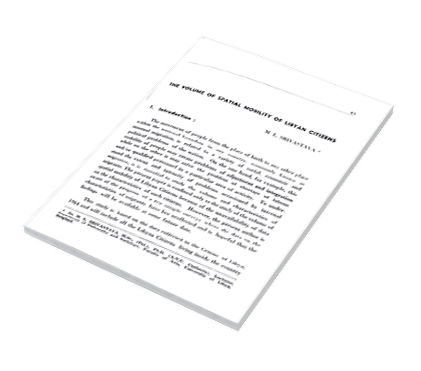THE VOLUME OF SPATIAL MOBILITY OF LIBYAN CITIZENS
DOI:
https://doi.org/10.37376/deb.v5i2.3081Keywords:
LOLUME OF SPATIAL MOBILITY OF LIBYAN CITIZENS THE VOLUME OFAbstract
The movement of people from the place of birth to any other place in the national boundary in any country, commonly known as
al migration, is related to a variety of social, economic and inter
litical problems of the nation. On the one hand, for example, this Mobility of people may create problems of adjustment and integration while on the other it may solve the problem of shortage of labour and/or qualified personnel in a particular area of activity. To under stand the extent and intensity of problems occasioned by internal migration, it is essential to study the volume and characteristics of migrants. The present paper is confined only to the study of the volume of spatial mobility of Libyan Citizens because of the unavailability of data in the characteristics of such citizens. However, the present author is aware of the progress of a few sample surveys where the data on the characteristies of migrants have bee ncollected and is hopeful that the findings will be available at some future date.
This study is based on the data collected in the Census of Libya, 1964 and will include all the Libyan Citizens living inside the country
. Dr. M. L. SRIVASTAVA, M.Sc., (Pat.), Ph.D. (A.N.U. Canberrn), Lecturer, Department of Philosophy and Sociology, Faculty of Arts, University of Libya, Benghazi.
THE LIBYAN ECONOMIC AND BUSINESS REVIEW
Thed tables
at the time of census, ie, 31st July, 1964. The published provide information on the place of birth cross-classified accord the place of cnumeration for all citizens (males and famales sed as well as together) boru inside Libya and only the place of en tion for those born outside the country. Since the data are avai with refrence to only one point of time, all the values of the vol migration are the result of migration of individuals in the cou their lifetime. Also, these volumes refer to the survivors of original migrants. It may be added further that these volumes estimate the extent of migratiou because the extent of return migr is not accounted for. These facts, therefore, must be taken account at the line of interpreting the results arrived at ini present paper.
For the purposes of the present analysis, a Muqatau 1 (an ad.., nistrative division) wil be considered as the spatial unit and movement across its boundary will be termed migration,
according to males seperately
of enumera are available
the volume of in the course of
vivors of the we volumes under return migration
se taken into
- Inter-Muqataa Mobility of Citizens Born Inside Libya :
and
General The number of citizens who were born and also enume rated as living inside Libya in 1964 was 1,478,541 (770,326 males and 708,215 females). Of this number, 1,304,056 (671,923 males 632,133 females were enumerated in the Muqataa in which they we born. The remaining 174,485 citizens, or 11,80 per cent of the tota citizens born inside Libya, were not enumerated in the Muqataa of their birth. The percentages of males and females who were not enume rated in the Muqataa of their birth, in terms of the total number of citizens of respective sexes born inside Libya, were 12.77 and 10.78 These percentages indicate a significant rate of mobility for Libran Citizens. Table (1) presents the percentages of citizens (persons, male (1) The country is divided into ten administrative divisions which are known Muqataat or Muhafadat The former is used in Census Publication while latter is used in practice.
Downloads

Downloads
Published
How to Cite
Issue
Section
License
Copyright (c) 2022 Dirasat in Economics and Business

This work is licensed under a Creative Commons Attribution-NonCommercial-NoDerivatives 4.0 International License.







